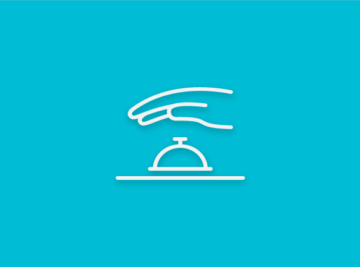Creating a blog is an outstanding way to grow your reach within the local community and beyond. For independent schools, blogs are an invaluable resource to showcase the benefits of your programs to prospective families.
When starting a blog the first and most important step is often overlooked. In this article, we take a deep dive into creating a successful school blog post by asking:
-
What keywords should you write to rank for?
-
What about your targeted audience?
-
Who is this blog ultimately going to appeal to?
Maximize your content with our editorial calendar template!

Understanding your Goals
Before answering any of the questions above, you should first analyze your goals. You cannot afford to overlook this first step, as goals will set the tone for each piece of content published during your content push.
With a school blog, there are a number of potential goals to consider. For example, a blog could rank for a specific term that prospective families are searching for, or help spread your message on social media.
Blogs can also function as a resource to email to prospective families. In this scenario, the blog would provide information and clarity for prospective students and families in the consideration stage.
Another goal of a blog might be to acquire valuable backlinks to your website. Search engines value backlinks because they work as a “vote of confidence” from one website to another. Gaining more backlinks increases the chance that your website will rank well and produce positive SEO results.
School blogs can also boost retention efforts. Posting blogs highlighting school events and activities keeps the school community happy. Not to mention, blogs with pictures or videos will most likely be shared by parents and spread through social media. This creates a good feeling for parents while creating a sense of satisfaction that their investment was well made.
Finally, a school blog can also have the goal of spreading a school’s athletic results and accomplishments. Again, the feeling of satisfaction and joy is prevalent in these types of blog posts, especially for independent schools with boarding students whose parents may not have the capacity to travel to every athletic event.
Before you create a successful blog post, you firstly need to identify your goals. Below we go through each goal-related scenario and identify some key factors to consider when creating the right blog post for your school’s marketing efforts.
Blogging to Rank for Specific Keywords
The strategy to ranking well for a specific keyword has recently changed. For instance, in the past authors could incorporate as many keywords into a blog as possible in order to rank well. Search engines nowadays, however, actually penalize blogs for this tactic—also known as keyword stuffing.
In order to rank well in the current search engine environment, you have to focus on answering the questions searchers are asking.
Keyword Research
Keyword research simply involves the process of researching the relevant terms searchers are using to ask questions in search engines. It’s important to utilize long-tail keywords as well. These keywords tend to cover the full topic that a searcher is asking. For example, a long-tail keyword such as “important questions to ask in an admissions interview” works better than just “admission interviews”.
Long-tailed keywords also allow you to gain a better perspective with your audience. In essence, you’re addressing the questions they’re asking. So, how do you know what questions they’re asking?
Schools can certainly utilize resources to gather responses from surveys, questionnaires, and social media inquiries, but keyword research can supplement these efforts in the interim. By researching other high ranking articles on specific keywords you can understand what questions prospective school families are asking in general.
Fortunately, there are tools that can aid with keyword research and quantify your results in order to determine the most efficient keywords for your article.
Some of the best online databases include:
- Keywords Everywhere
- Ahrefs
- Google Search Console
- SEM Rush
These online resources can help with your keyword research and ultimately, provide the right terms to include in your content. It’s also important to remember that a calculated schedule for your content push is also a necessity. For instance, an editorial calendar can provide a centralized source for all of your content, including keywords, publish dates, and targeted personas.
By progressively pushing content with the appropriate, measurable keywords, your school’s blog can ultimately grow with high rankings on search engines.
Blogging as a Relevant Resource
As mentioned earlier, creating blogs as a relevant resource is more about the consideration stage for your prospects. Whereas blogs in the awareness stage are about gaining the most exposure and visibility, blogging as a resource is more about answering a specific challenge or pain point.
To a certain extent, blogs in the awareness stage answer challenges as well, however, this particular goal aims to specify a solution to an obstacle. For instance, when a prospect fills out a form or opens a conversation with your school, you can email a link to a blog with relevant information addressing what makes your school unique.
Some relevant topics in this example could include:
- Why do our students have chapel each week?
- What are the benefits of makerspaces?
These topics could be forwarded from an admissions counselor or head of school to a prospective family after they fill out an admissions form. These blogs should reference internal resources. Talk to current students or parents: What were their challenges or obstacles when filling out application information? What persuaded them to ultimately make the decision to attend your school?
By working with your admissions team and current students and families, you can draft a helpful resource blog that addresses common pain points and ultimately progresses your prospects through their journey in a smooth, transparent, and helpful way.
Blogging for Backlinks
When it comes to boosting your website’s SEO performance, backlinks are crucial to success. A backlink is simply a link from another website to yours. As mentioned earlier, search engines value backlinks because they are essentially a “vote of confidence” from one website to another.
The strategy to earning backlinks has changed over the past years as well. Nowadays, SEO strategists must meticulously search for ways to earn high-quality backlinks from other websites and writers.
This is especially true for independent schools where, in many cases, admission teams are competing for similar applicants with similar backgrounds. Distinguishing your website’s content through reputable backlinks can be challenging, but the return can be very rewarding.
Here are some tips to boost your chances of acquiring more backlinks for your school’s blog.
1. Update Older Blogs
A good starting point for acquiring backlinks is to perform an internal audit on content that’s already been published. In some cases, older articles may already have links that can be utilized.
Start by updating the blog with more relevant stats, graphics, or CTAs. After it’s published, reach out to any and all authors who have previously linked to that article and let them know about the update. This is a simple, in-house method of acquiring backlinks, but can be effective for schools looking to address a “low hanging fruit”.
2. Search for Blog Mentions
You may not realize it, but your school is being talked about more than you think. Consider what makes your school unique, chances are your marketing team has published blogs highlighting these characteristics before. Through social listening, you can monitor what’s being said about your content and your school in general.
Search for mentions where authors, editors, and publishers are referencing information from your blog or school. Then reach out to those contributors and ask for a proper link. This is usually a quick and easy fix to gaining a link from a contributor that clearly values your content.
3. Create more Downloadable Information
Your blog should ultimately work as a guide for your prospects as they progress through their journey. Generally, most readers are consuming your content because it addresses a pain point or challenge. That’s why creating downloadable information is crucial to growing your blog’s reach through backlinks.
Downloads, such as e-books, checklists, templates, or brochures not only work as a positive “next step” for your readers, but also help in acquiring backlinks. These useful tools give incentive for readers to share your information. Also, by creating attachable downloads for each blog post, you can establish a resource list for relevant topics that will garner more traction for backlinks.
4. Conduct more Outreach
School’s ultimately function to help students learn and grow into model citizens. Therefore, blogs should be reflective of positive school news and updates throughout the year. For instance, if a student earns recognition for a research study or a faculty member gains attention for their work in a local publication—a blog should highlight those accomplishments.
A blog essentially works as the school’s loudest voice and through proper outreach to publications or journalists, your school can gain useful backlinks. The key is to present potential backlink sources with a transparent page they can link to. An increase in outreach not only increases your chances of gaining more backlinks, but also establishes your brand within the local community.
Blogging for Retention
Another goal of blogging for schools includes focusing on retention efforts. In this goal setting, the inbound flywheel model comes full circle. Take, for example, the delight stage, where the goal is to satisfy your customers to the point they evangelize your product to others. Once you achieve this stage, the flywheel model begins all over again.
If your students and parents are happy, chances are your school will maintain a high retention rate. As mentioned earlier with acquiring backlinks, a school blog should highlight the positive news and updates throughout the year.
Visualization is important in these types of blogs too, as a cross-marketing approach with photos and videos can help boost your outreach efforts. For example, a blog highlighting a school event could contain a number of pictures or videos on social media with a link to the article. Parents will likely share this information with others on social media if their child is highlighted and/or featured in the piece of content.
Simply put, school blogs should give parents a sense of satisfaction that their investment into bettering their child’s education is being well made.
This influences word of mouth marketing as well. Considering that 83% of consumers say they trust recommendations from family, colleagues, and friends about products and services and 72% of people get news from friends and family—the importance of word of mouth marketing cannot be overstated. A school blog can greatly boost your retention efforts in a positive, helpful format.
Blogging about Athletics
Athletics is arguably your school’s biggest platform to promote accomplishments on a regular basis. Athletic blogs help with retention as well because parents gain a sense of satisfaction and joy when seeing their children promoted for success on the field of play.
When it comes to outreach through athletics, independent schools often have a unique advantage due to scholarships, post-graduate programs, or well-designed facilities and resources. Your school blog should highlight these characteristics to help with overall outreach and enrollment efforts.
During each season, blogs can highlight team results, athletic accomplishments, or individual awards. For instance, most independent schools promote student athletes to play at the next level in a collegiate setting. If and when a student “signs” with a school, a blog highlighting their accomplishments could be a quick and easy way to gain a few backlinks from that university or local publications in that university’s town.
Another example of relevant content could include features on different student athletes. Does that student athlete participate in another program? Are they actively involved in the arts as well? Content featuring these students not only shows your school is well-rounded, but also breaks down barriers for prospective families who may worry about their child having the capacity to succeed in multiple school activities
Essentially, athletics are another avenue for your school to produce relevant content and promote success throughout the year.
Determine your Blogging Goals
As you can see, there are several goals to consider when creating a successful blog post for your school. It’s important to remember that each blog has its own unique message and target audience, therefore, these goals can be interchangeable.
Here is your chance to be creative, as each goal will highlight a unique and important characteristic of your school. Ultimately, before you begin your first draft for a piece of content, it’s important to define your goal for that article.
From there, you can determine the right keywords, targeted audience, and topic for your blog. What are the most important goals for your school’s blog? Let us know in the comments below!









